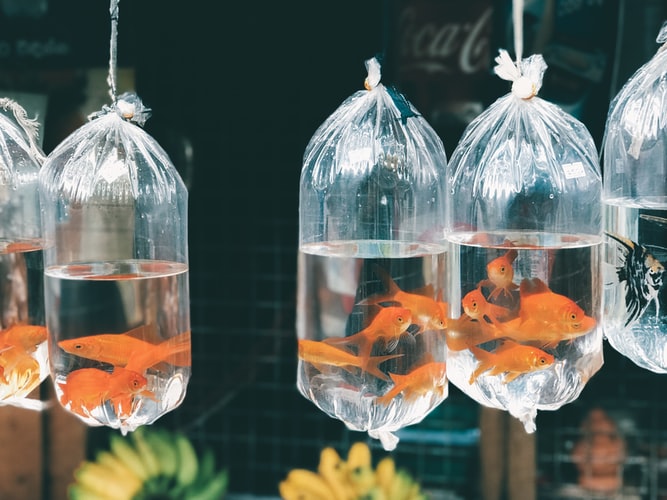Although online retailers are offering deliveries of fish direct to your door, many aquarists before to pick up their new fish stocks in person. If you are travelling some distance to a specialist breeder, this may mean that your newly acquired fish are forced to remain in a bag for several hours before they can be introduced to their new home.
The length of time you can keep fish safely in a bag varies depending on a few factors. A larger bag with more water and oxygen will usually give you more time to work with. However, the type of fish you are storing within the bag will have unique requirements. What’s more, external temperatures can have a big impact on the amount of time you can safely leave a fish in a bag before needing to introduce it to a tank or pond.
General Guidance
In some cases, you can leave small to medium-sized fish in a bag for 10 or more hours. However, if you want to minimise the amount of stress your new fish is exposed to, you should aim to have it out of the bag and in its new home within 6 hours. In extreme cases, a fish can survive in a bag for up to two days, but this situations should be avoided whenever possible. Ultimately, aim to get your fish out of the bag and into water as soon as possible.
There will of course be times when you need to keep your fish in a bag for extended periods of time. You may have driven to a fish breeder based many miles from your home, with you needing to undertake an hours-long return journey. Alternatively, you may have encountered a catastrophic issue with your aquarium or pond setup that has forced you to use water-filled bags as a temporary home for your fish. Thankfully, there are some steps you can take to extend the amount of time you can keep your fish within a bag.
If you only need to keep your fish in a bag for a short period, they should be happy enough in a bag filled with water and air. Oxygen levels are likely to be sufficient enough to prevent suffocation before can add them to a tank or pond. However, during much longer journeys, regular air is unlikely to provide enough oxygen to prevent suffocation. In these cases, you should instead have a bag filled with water and pure oxygen, rather than standard air. With a pure oxygen supply, fish can survive happily in a bag for more than a day, provided water temperatures are kept at a comfortable level.
The amount of water in a bag is also important to consider. Don’t assume that more water is necessarily the best thing for your fish. Provided they have enough water to be submerged in and move around somewhat, they will remain alive in a sealed bag for some time. If you overfill a bag with water, there is limited space remaining for oxygen. Ideally, any bag you use to transport fish should only be filled a third-full with water. You should really be leaving as much free space as possible for air and oxygen.
Finally, you need to think about the stress levels of your fish in transit. Being removed from one environment, temporarily stored in a bag and transported to a new living space can be particularly disruptive. Such situations are likely to overexcite fish, leading them to require higher levels of oxygen. If you’ve only provided them with a little amount of air or pure oxygen in their bag, they will consume it more quickly if agitated.

